When we were planning our trip to Georgia I’d wanted to include some time in the Black Sea beach resort city of Batumi even though Julie, Jo and I aren’t really beach people, and by that I mean that we prefer a hike, city walk or good museum to a sun lounger. Not that sunbathing was on the cards in late March as it would have been far too cold!
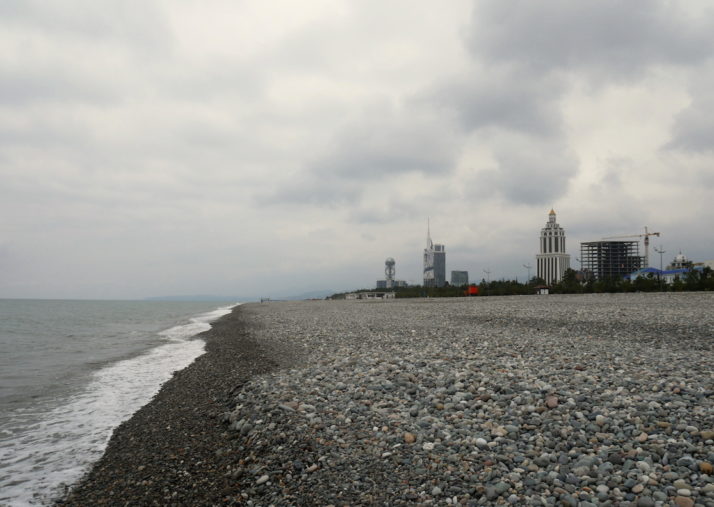
Batumi: Georgia’s beach resort. No fine sand but it is clean and over 6km long
With much of the same reasoning behind hiring a car in Armenia, having picked up another in Kutaisi meant it was easier to justify a couple of nights in Batumi as there were a few sights we’d read about that piqued our curiosity, such as the Black Sea Boulevard, a tower with a ferris wheel at the top (how does that work? – we had to find out!) and the region’s khachapuri speciality is the iconic bread-boat filled with cheese and topped with an egg. Much like Naples being the home of pizza and serving the best we’ve had, would this be our home of khachapuri?
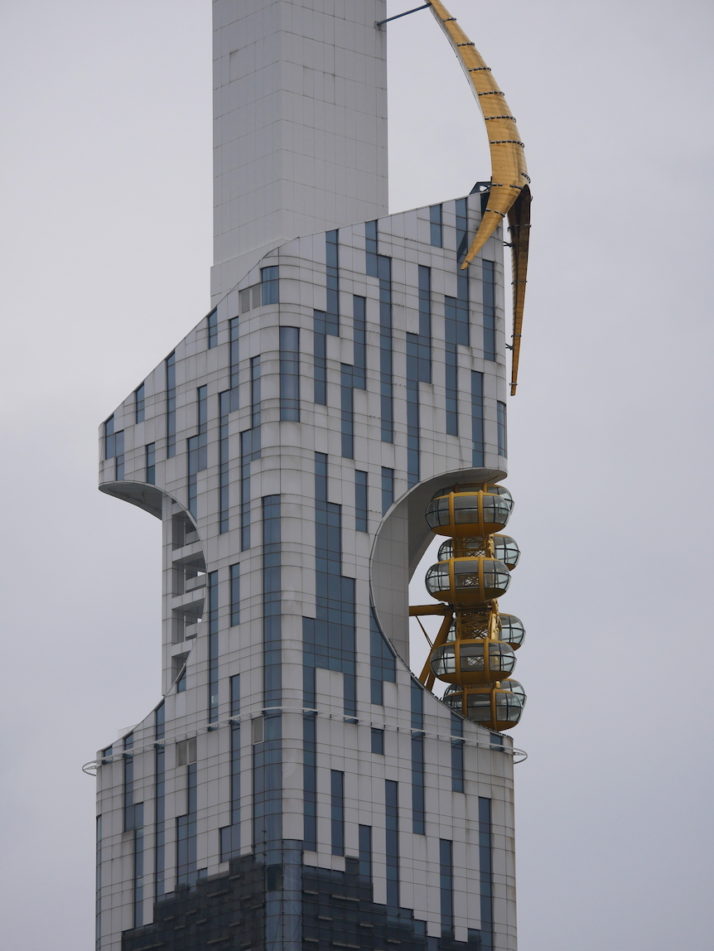
There it is – the ferris wheel at the top of the tallest building in Georgia. Originally built as a Technology University, it is currently destined to become a hotel
Batumi is the third largest city in Georgia and it is easy to see that the laid back vibe is popular with Georgians, Armenians, Russians and Turks alike. Accommodations a-plenty (and really cheap off season) running the whole spectrum from self-service apartments to international luxury hotel chains and they’re building new apartment blocks at an impressive rate too.
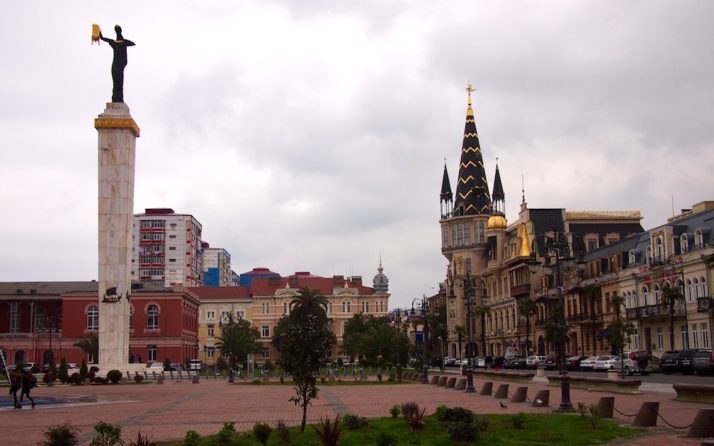
Batumi’s Old Town has a medieval fairground attraction quality to it
We started our tour of the city in the respectfully renovated Evropas Moedani or Europe Square, consisting of lovely two-tone brick buildings set around a large open square with one of those ground-squirting water features you can play chicken with and a tall statue of a woman holding a golden fleece. Why’s that you ask? So the story goes, Jason and his 49 Argonauts sailed past Batumi, along the Rioni river a little further up the coast and inland to Kutaisi where they took the Golden Fleece from a dragon. The legend of the Golden Fleece is based in history: Georgians used sheepskins to sift for gold in mountain rivers!
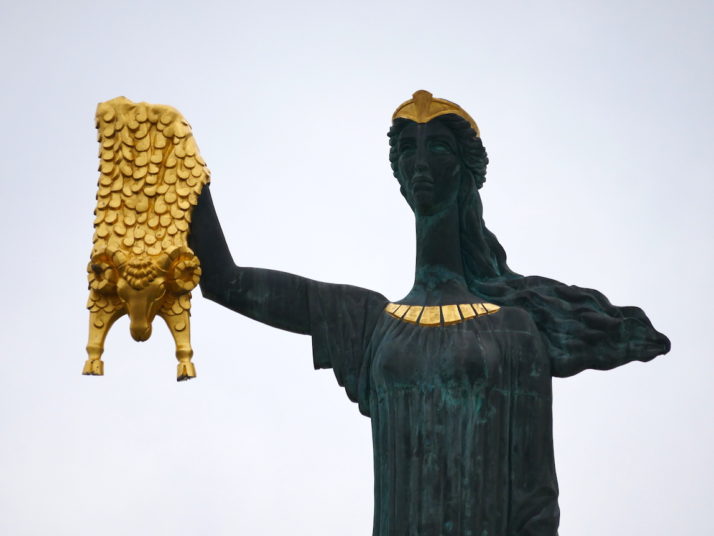
The Medea monument in Europe Square. In Greek mythology, Medea was a daughter of King Aieti, the king of Kolkheti in present day western Georgia. Medea helped Jason to steal the legendary Golden Fleece
Working our way towards the coast we stopped at the Adjara Arts Museum, a nicely sized gallery with a varied collection of Georgian, Russian and European artwork, followed by the Cathedral of the Mother of God in an imposing Gothic Revival style that the Soviets had previously repurposed as a high voltage laboratory!
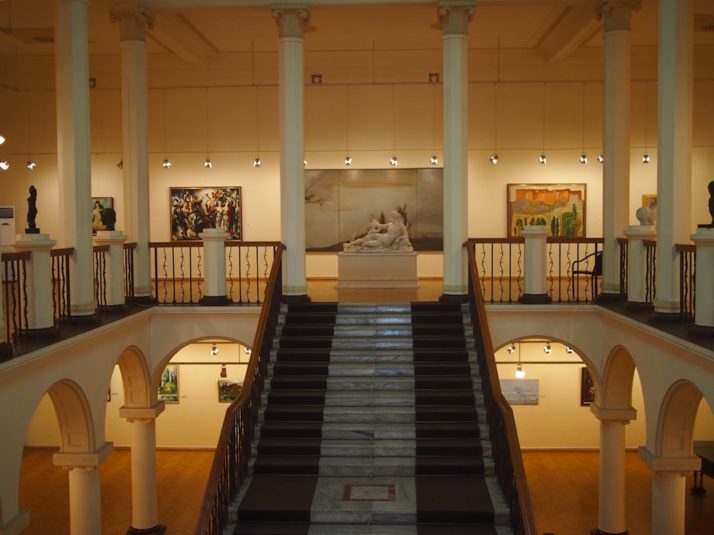
A solid and varied collection with a couple of standout pieces, such as a bold pomegranate by Kudba and a portrait of 2 old men by Gabashvili

Batumi’s Cathedral of the Mother of God is an impressively imposing Gothic building. No danger danger of high voltage anymore
Batumi’s main attraction is the 6km coastal boulevard, a wide promenade with separate cycle lanes and lined with large, quirky art on the coastline side and impressive hotels and apartment blocks on the other. Crescendoing at the northern end is a wide open space dominated by a large ferris wheel, the other ferris wheel I mentioned earlier that sticks out of the 13th floor of the Batumi Tower – the tallest building in the country – and a monument to Georgian script and culture called the Alphabet Tower.
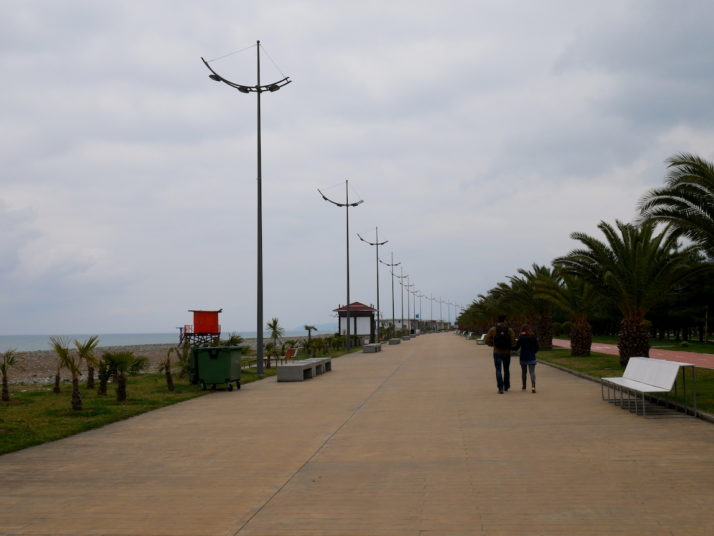
Batumi’s Boulevard. We reckon it’ll be a lot busier when the weather’s nicer..
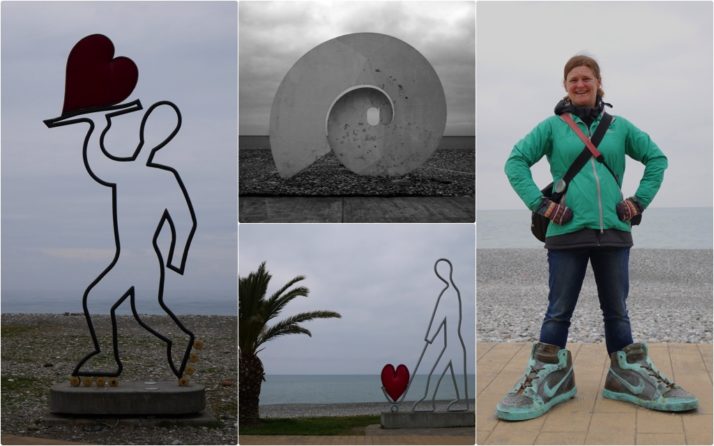
Batumi’s Boulevard is lined with quirky art, including these giant shoes that made us all look like midgets, a series of outlined figures with hearts and what we think was a cross between a snail and the ‘@’ symbol
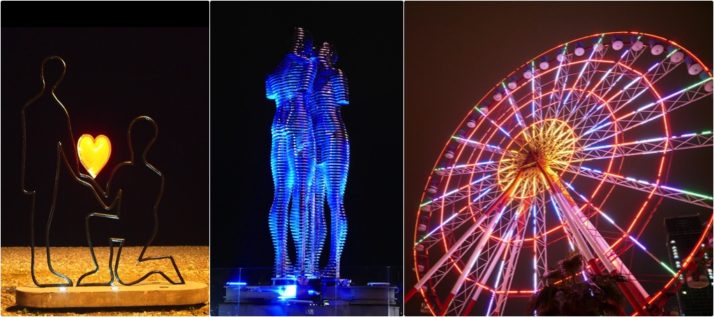
There’s just as much to see at night too, the most impressive illuminated artwork being Ali & Nino (centre) who change colours as they pass through each other!
A special mention goes to the dancing fountains that our guidebook said wouldn’t be running this early in the year so we were very pleasantly surprised when we stumbled upon them. We’ve seen a few water displays set to music and lights before, but these were by far the most coordinated.
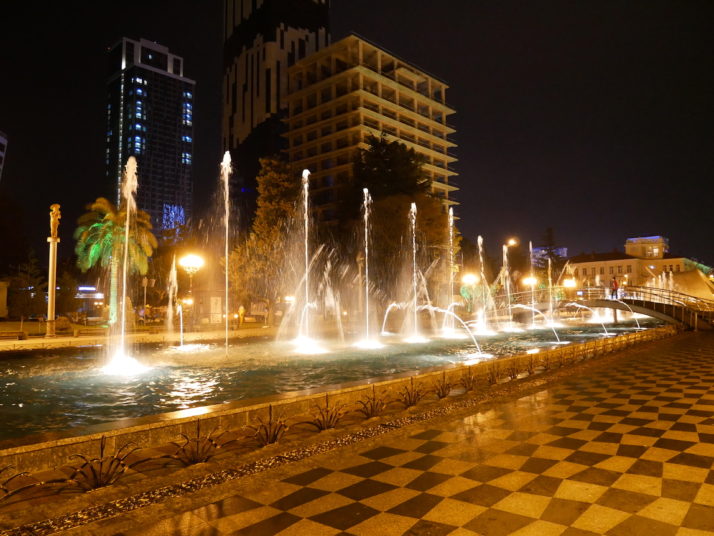
Batumi has the best dancing fountains we’ve seen
At this point in our travels around Georgia we’d accomplished our side quest of trying all of the styles of khachapuri, the country’s national dish of bread and (typically) cheese. As mentioned, the western region of Adjara is home to the most iconic of khachapuri styles – the Adjaruli khachaphuri..
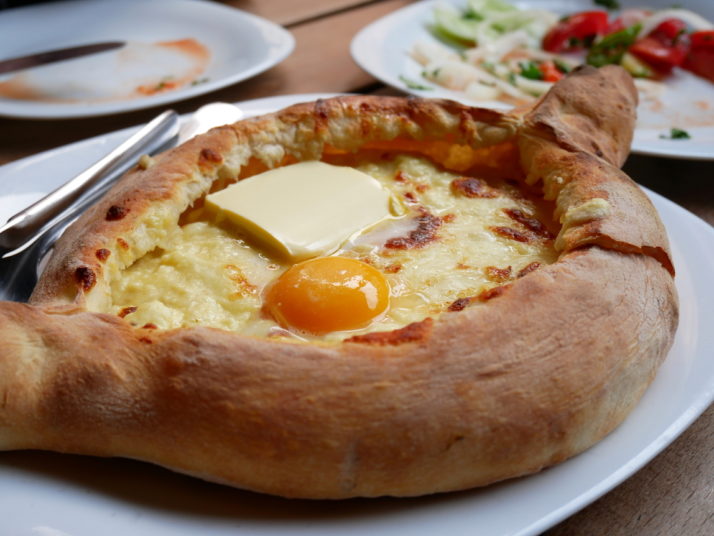
The Adjaruli – a bread boat filled with molten cheese topped with an egg and an generous knob of butter. Genius.
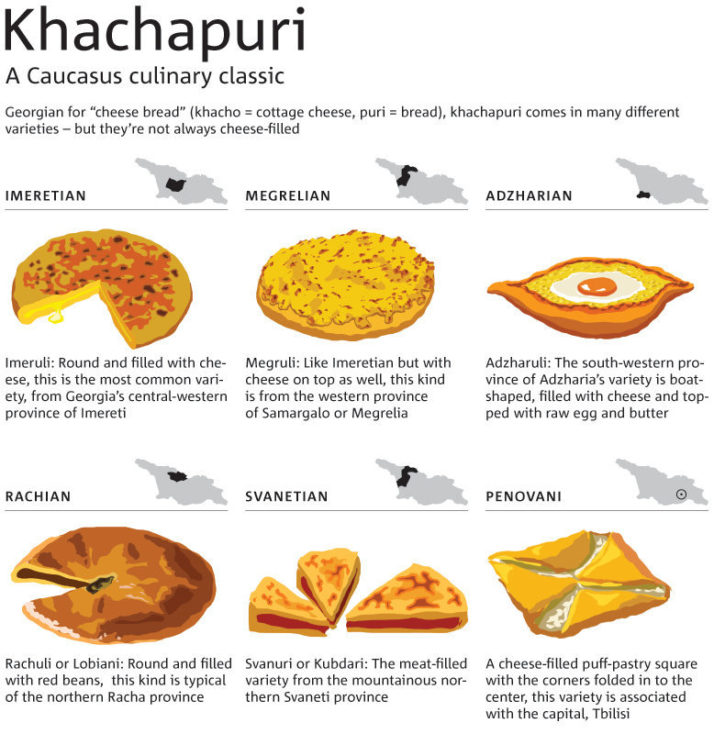
Gotta catch them all! Source: Gudaturi
While the Imeruli and Megruli are available across the country and almost all varieties can be found in Tbilisi, we can confirm that just as for pizza in Naples, the local pride in Batumi makes for the tastiest of the tasty khachapuri. Honourable mention and a close second goes to the meat-filled kubdari we watched being skilfully made in Ushguli.

 two year trip
two year trip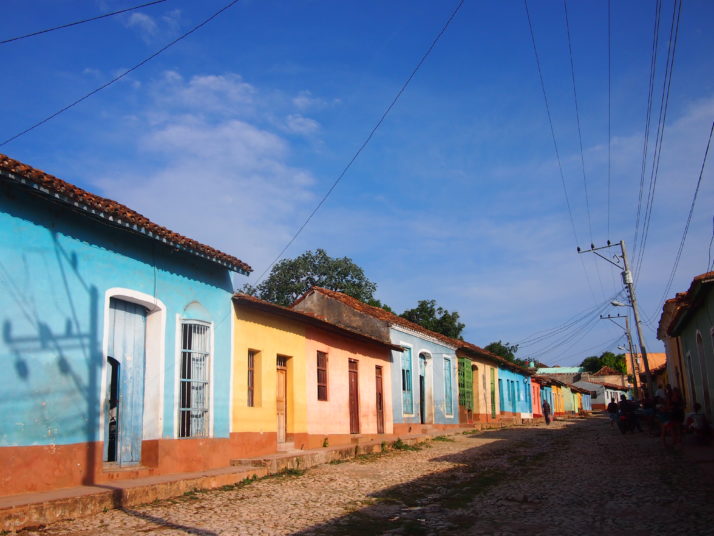 Pastel coloured houses line the cobbled streets in Trinidad’s historic centre
Pastel coloured houses line the cobbled streets in Trinidad’s historic centre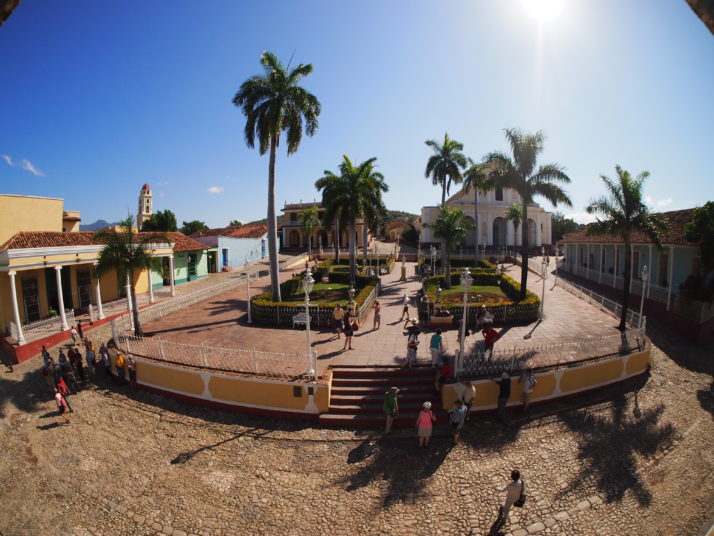 Plaza Mayor from the balcony of the art museum. The cathedral is in the top right of the square in the photo
Plaza Mayor from the balcony of the art museum. The cathedral is in the top right of the square in the photo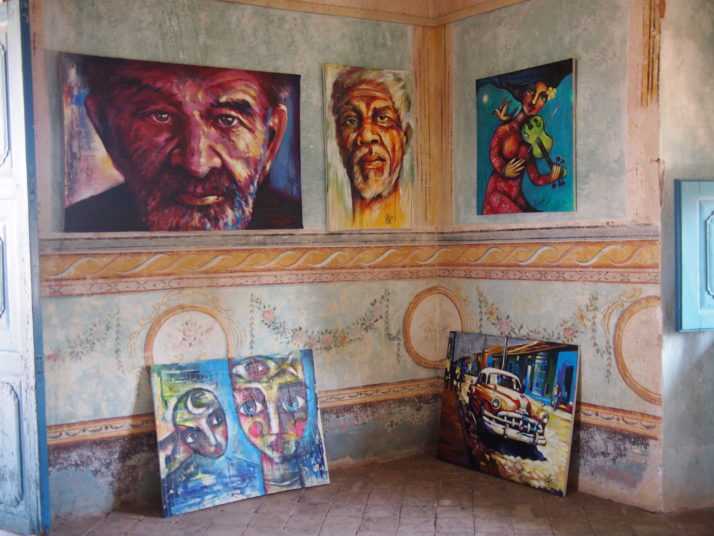 We liked the wall frescoes better than most of the art in the Art Gallery
We liked the wall frescoes better than most of the art in the Art Gallery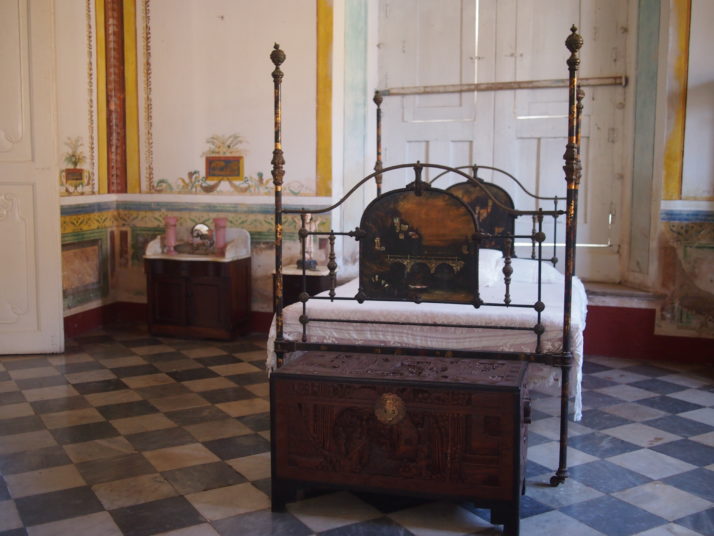 A sumptuous mother-of-pearl inlaid bedstead in the Municipal Museum
A sumptuous mother-of-pearl inlaid bedstead in the Municipal Museum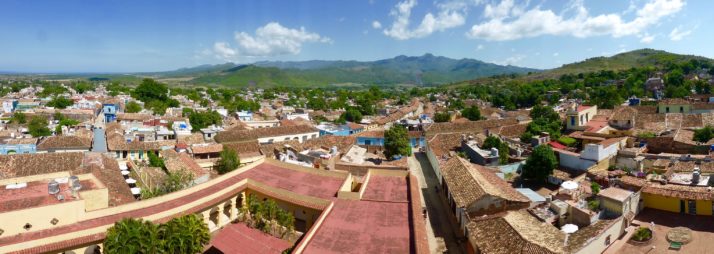 Entry to the museum also entitles you to climb the bell tower for panoramic views over the city and to the surrounding mountains
Entry to the museum also entitles you to climb the bell tower for panoramic views over the city and to the surrounding mountains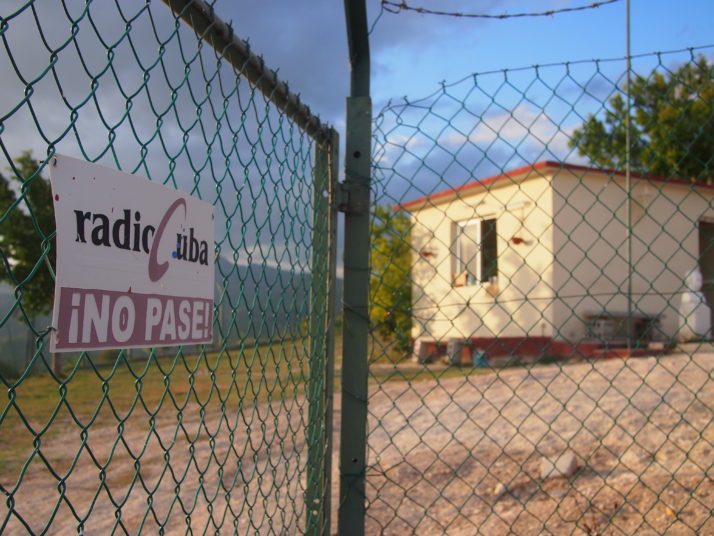 The enterprising security guard might even take you out back to stand on the roof of the shed containing the back-up generator (past the no entry sign) before selling you a cold can of beer!
The enterprising security guard might even take you out back to stand on the roof of the shed containing the back-up generator (past the no entry sign) before selling you a cold can of beer!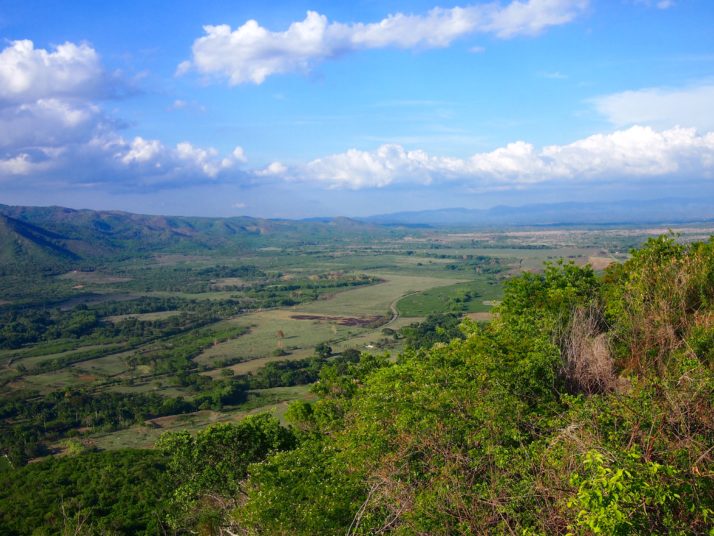 View down to Valley de los Ingenios (from the top of the generator shed!)
View down to Valley de los Ingenios (from the top of the generator shed!)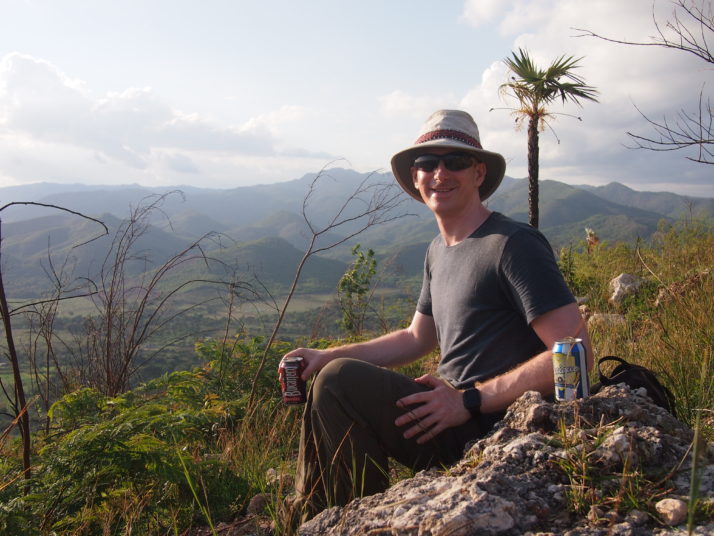 Admiring the sunset view with a cold beer
Admiring the sunset view with a cold beer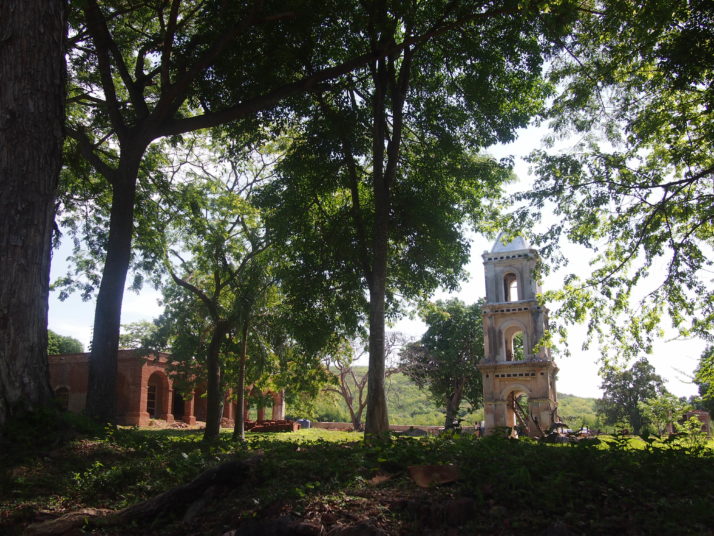 The owner’s house and bell tower at San Isidro de los Destiladeros are undergoing restoration works
The owner’s house and bell tower at San Isidro de los Destiladeros are undergoing restoration works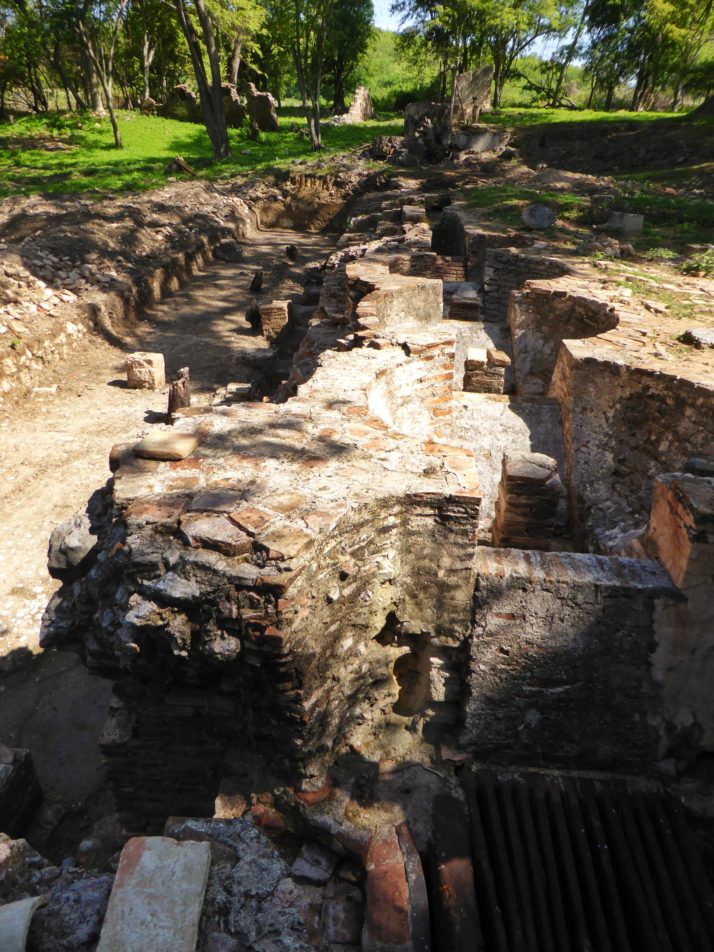 In the ruins of the sugar factory we could see how the system of boiling pans would be set over the furnaces to turn the sugar cane juice into molasses
In the ruins of the sugar factory we could see how the system of boiling pans would be set over the furnaces to turn the sugar cane juice into molasses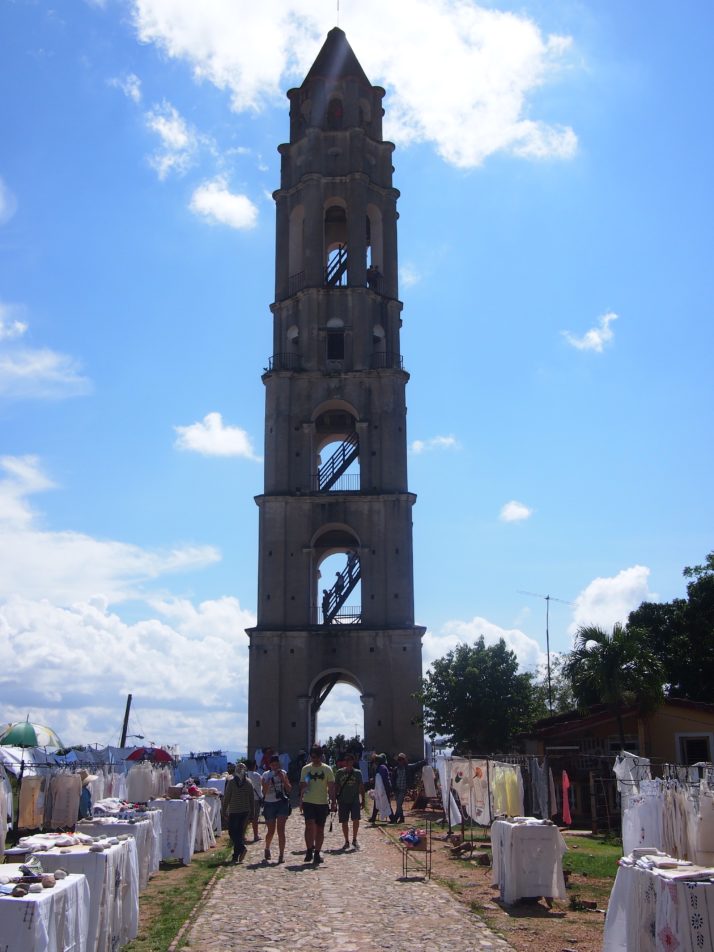 The tower at Manaca Iznaga is approached along a path lined with stalls selling local embroidery
The tower at Manaca Iznaga is approached along a path lined with stalls selling local embroidery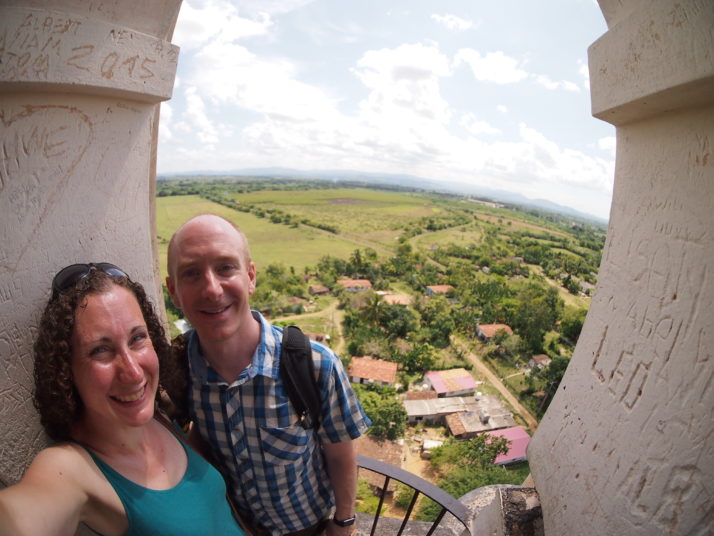 Another nice view from the top of the tower at Manaca Iznaga
Another nice view from the top of the tower at Manaca Iznaga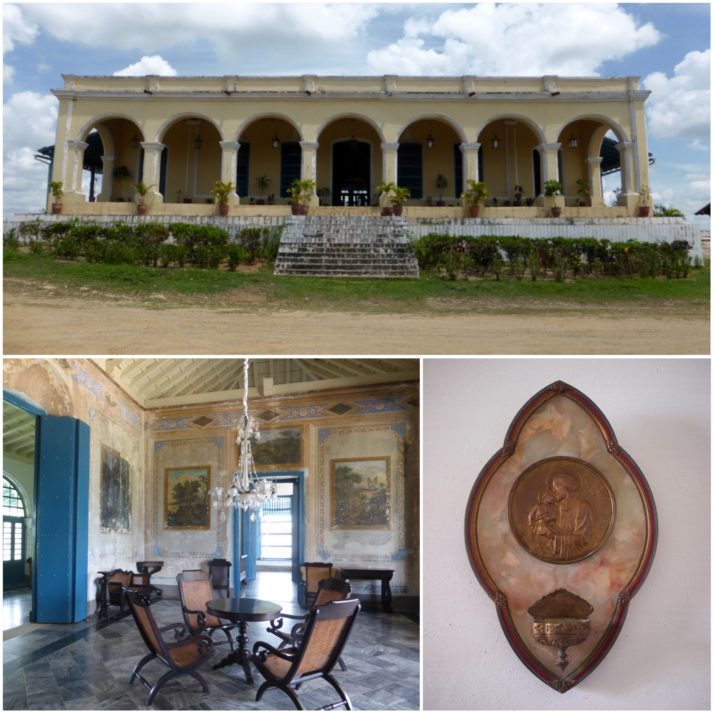 Casa Guáimaro; the wall paintings in the entrance way shows scenes of European cities; a holy water holder in the small family chapel
Casa Guáimaro; the wall paintings in the entrance way shows scenes of European cities; a holy water holder in the small family chapel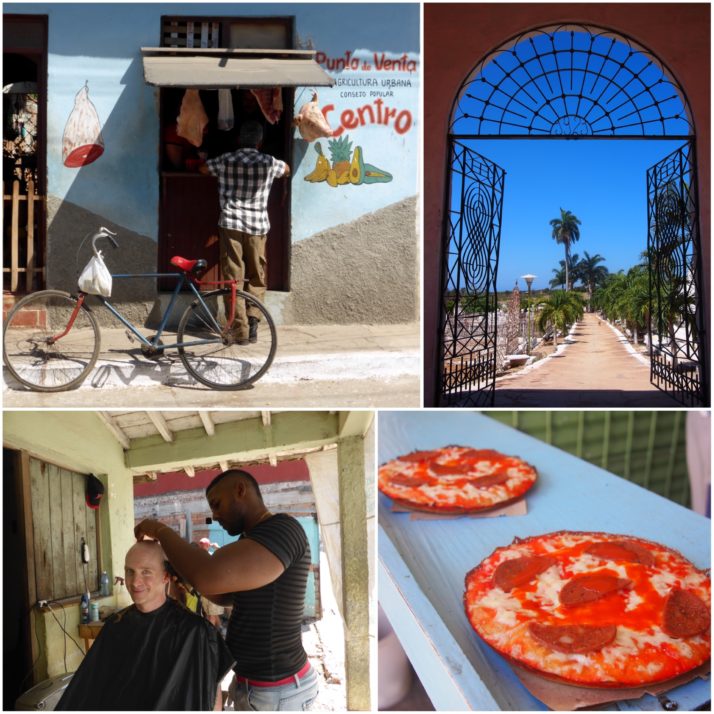 Clockwise from top left: a pig’s head hangs outside a butcher’s shop; gateway into the cemetery; pizza for lunch; the barber had a price list on the wall but insisted that the tourist price was different – he looked rather uncomfortable when we pointed out that all hair is the same
Clockwise from top left: a pig’s head hangs outside a butcher’s shop; gateway into the cemetery; pizza for lunch; the barber had a price list on the wall but insisted that the tourist price was different – he looked rather uncomfortable when we pointed out that all hair is the same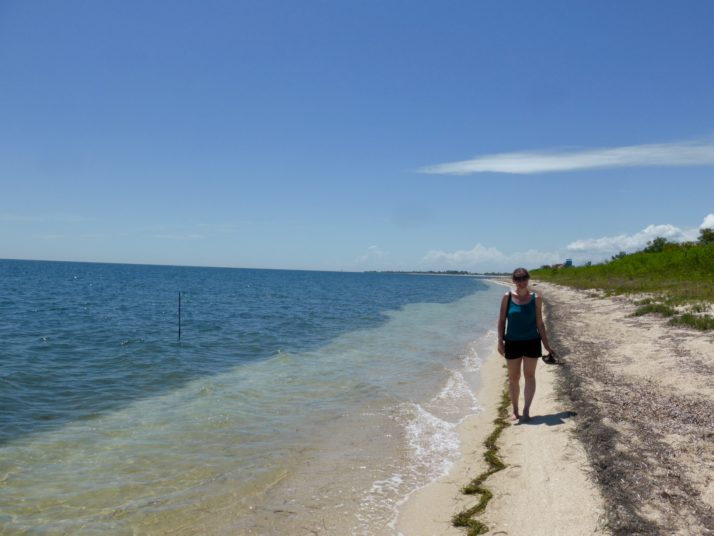 Wandering away from the crowds at Playa Ancon
Wandering away from the crowds at Playa Ancon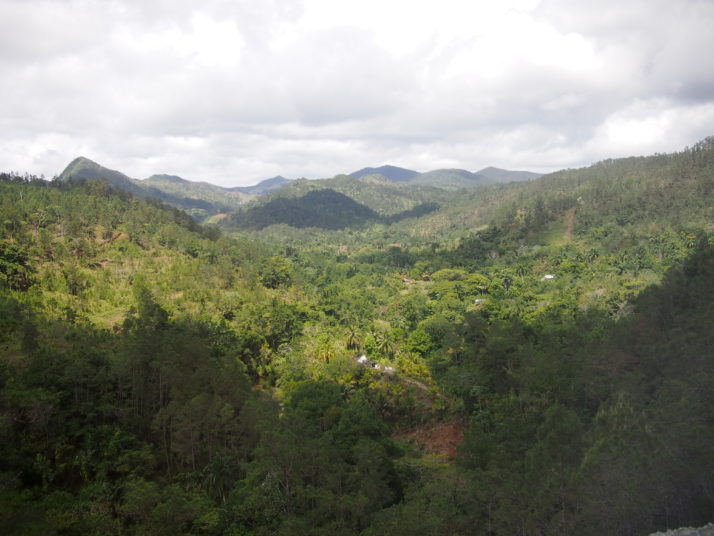 Spectacular views from the bus as we climbed through the mountains on our way to Baracoa along La Farola
Spectacular views from the bus as we climbed through the mountains on our way to Baracoa along La Farola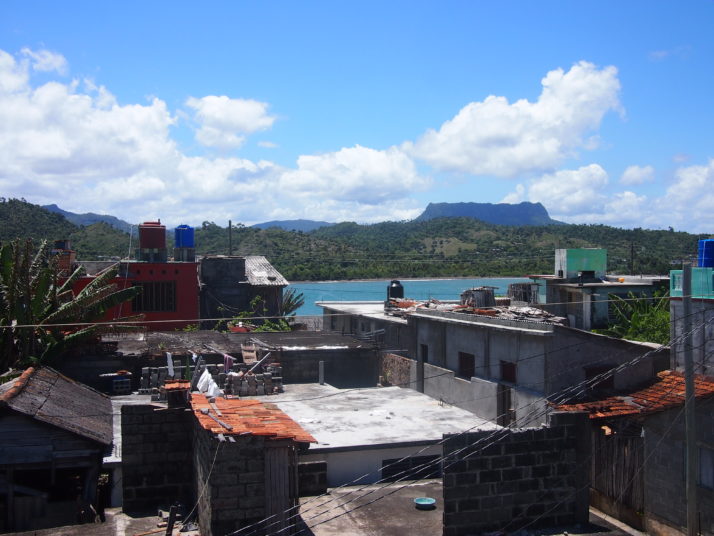 The table top mountain called El Yunque, the Anvil, is the symbol of Baracoa and is visible from many places in town including the roof terrace of our guesthouse.
The table top mountain called El Yunque, the Anvil, is the symbol of Baracoa and is visible from many places in town including the roof terrace of our guesthouse.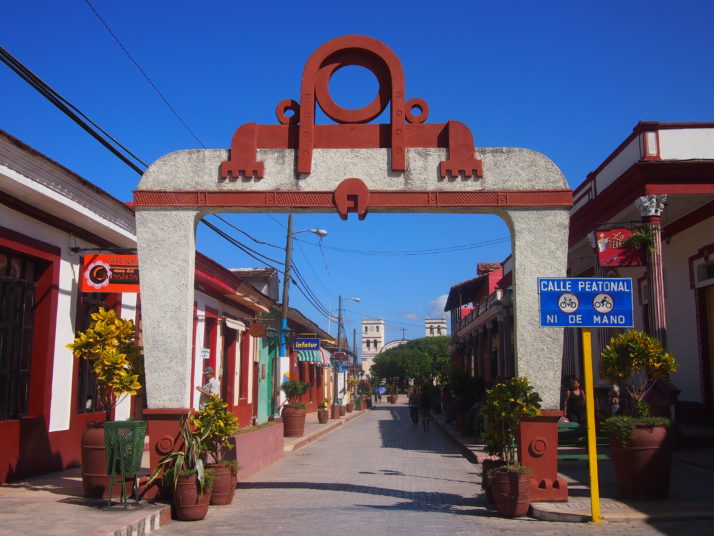 Looking along Baracoa’s walking street towards the cathedral
Looking along Baracoa’s walking street towards the cathedral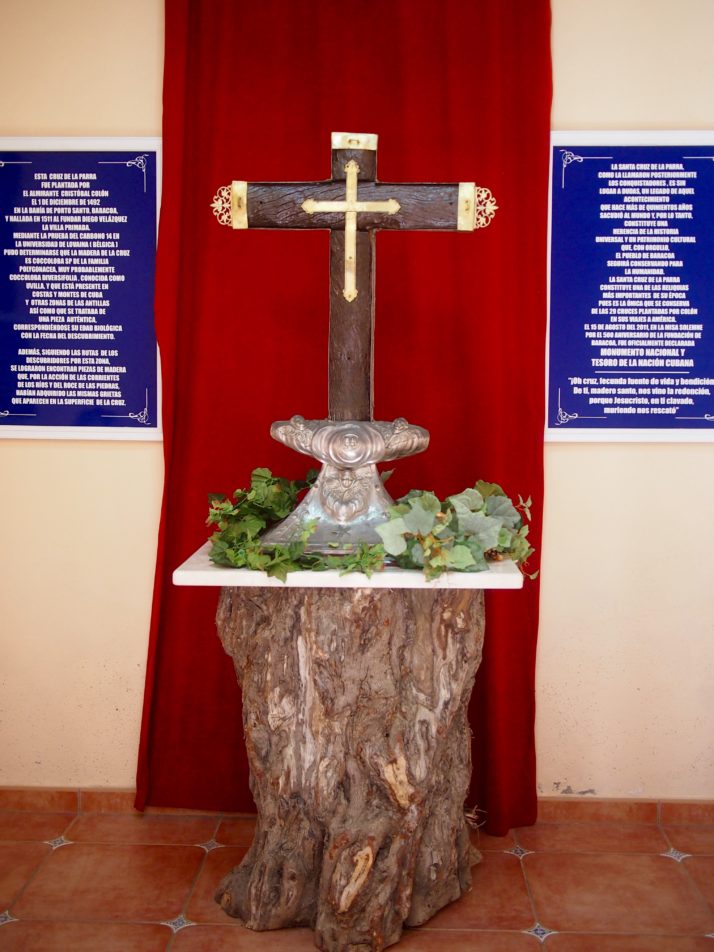 The Cruz de la Parra has been carbon dated to prove that it dates from the correct period but the wood is native Cuban and was not carried from Europe by Columbus as legend has it
The Cruz de la Parra has been carbon dated to prove that it dates from the correct period but the wood is native Cuban and was not carried from Europe by Columbus as legend has it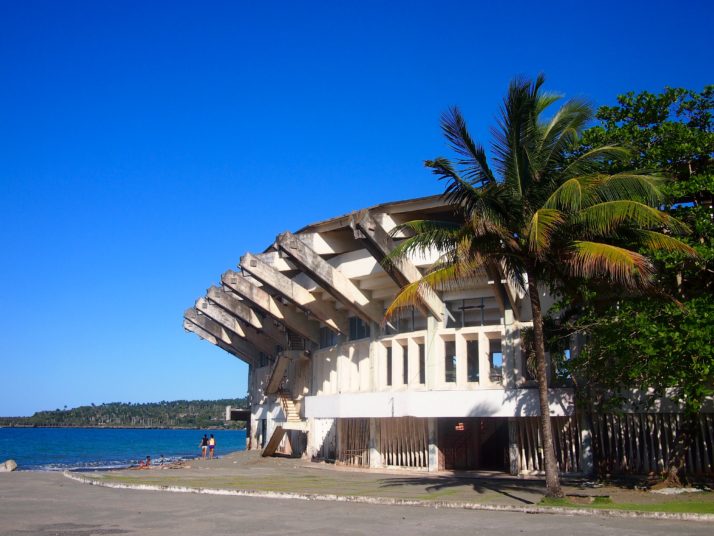 Baseball is Cuba’s national sport but its stadium was host to football practice when we poked our noses in
Baseball is Cuba’s national sport but its stadium was host to football practice when we poked our noses in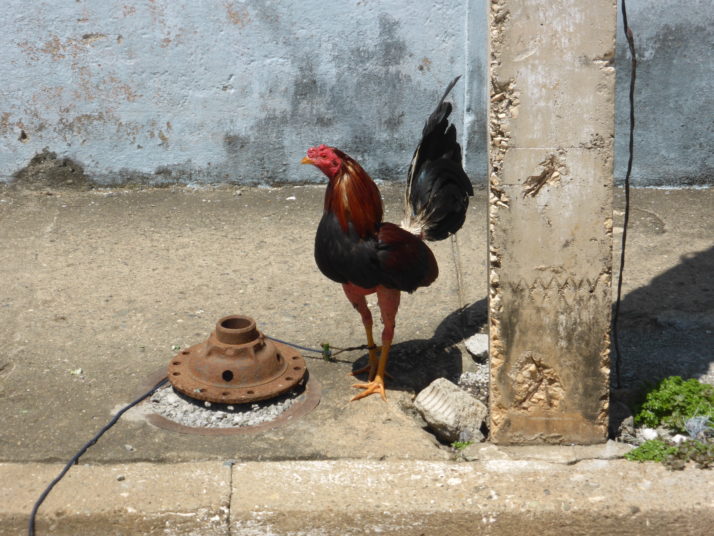 Cockfighting is a popular sport in Cuba judging by the number of cockerels we saw on a short walk through Baracoa’s streets
Cockfighting is a popular sport in Cuba judging by the number of cockerels we saw on a short walk through Baracoa’s streets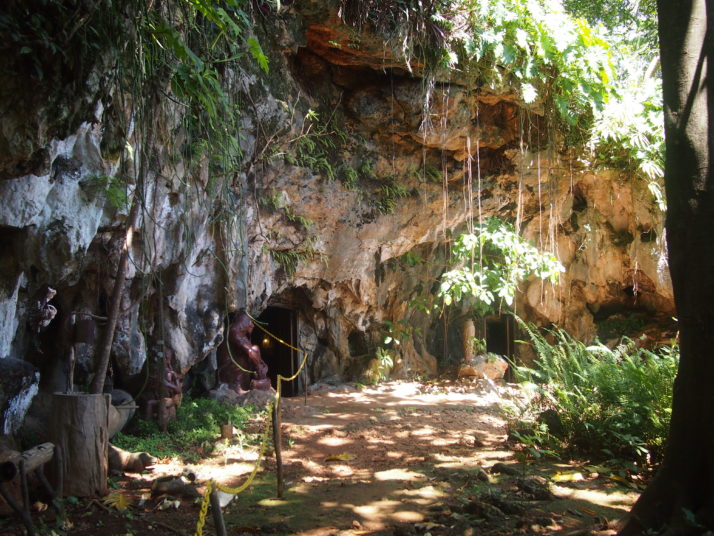 The entrance to Baracoa’s Museum of Archaeology
The entrance to Baracoa’s Museum of Archaeology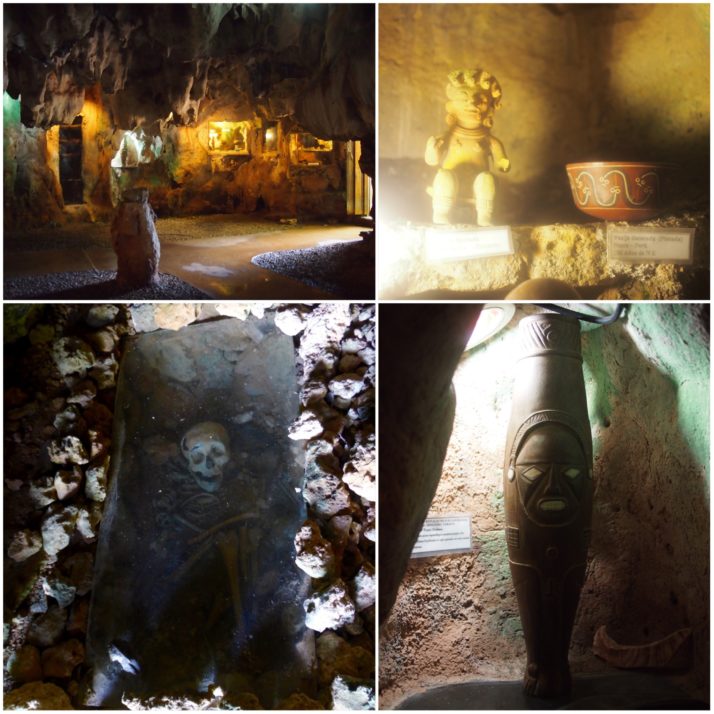 Museum of Archaeology (clockwise from top left): display cases inside the cave; Taíno artefacts; a replica of the Ídolo de Tabaco, one of the most important Taíno finds in the Caribbean; burial chamber
Museum of Archaeology (clockwise from top left): display cases inside the cave; Taíno artefacts; a replica of the Ídolo de Tabaco, one of the most important Taíno finds in the Caribbean; burial chamber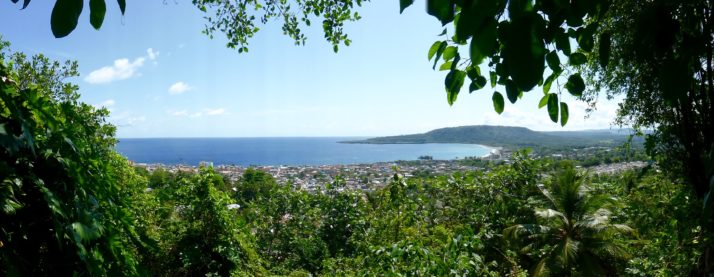 The viewpoint above the museum provides a reward for the uphill climb
The viewpoint above the museum provides a reward for the uphill climb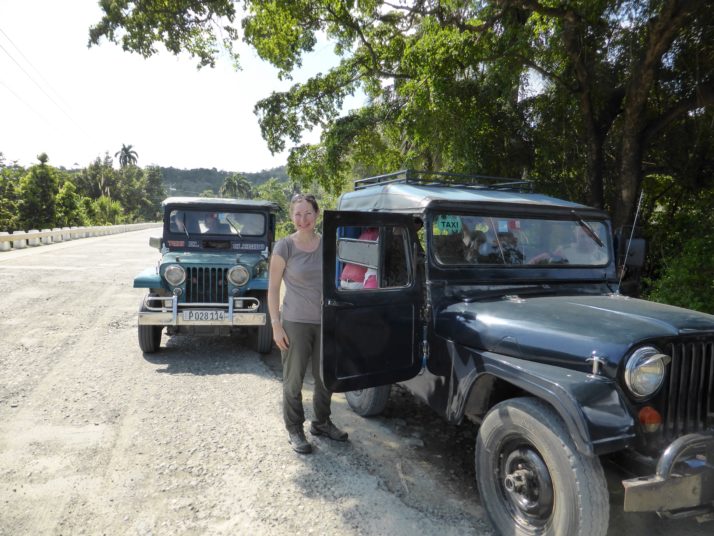 Stretching our legs during a brief pause in the drive to Humboldt National Park
Stretching our legs during a brief pause in the drive to Humboldt National Park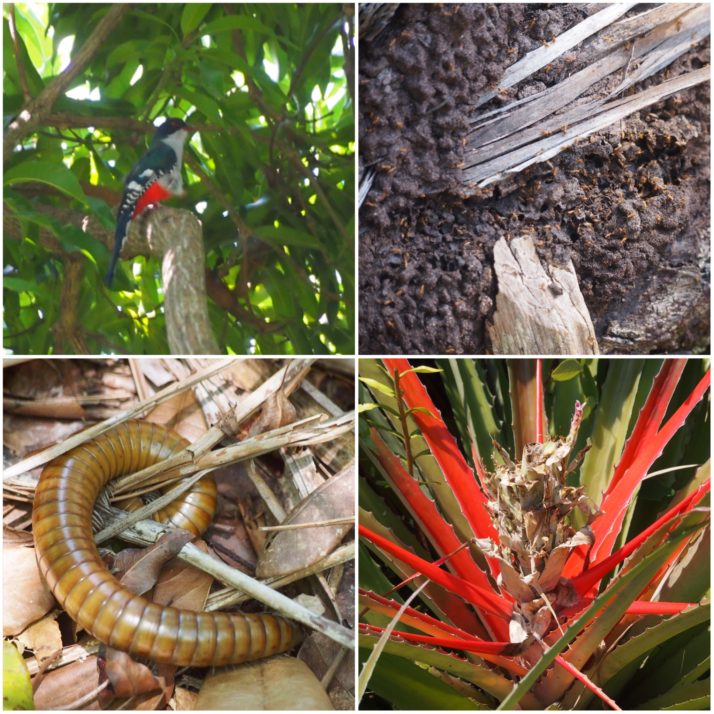 Flora and fauna in Humboldt National Park (clockwise from top left): Cuba’s national bird, the Tocororo; termites; the colourful Rat Pineapple is related to the normal pineapple but doesn’t produce an edible fruit; this huge millipede was about 25cm long and thicker than my thumb
Flora and fauna in Humboldt National Park (clockwise from top left): Cuba’s national bird, the Tocororo; termites; the colourful Rat Pineapple is related to the normal pineapple but doesn’t produce an edible fruit; this huge millipede was about 25cm long and thicker than my thumb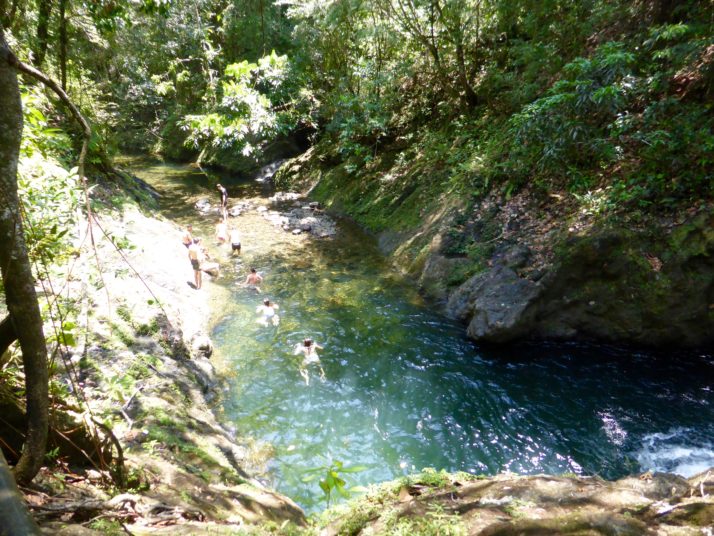 Some of our group swimming down the river to join us at the lunch spot
Some of our group swimming down the river to join us at the lunch spot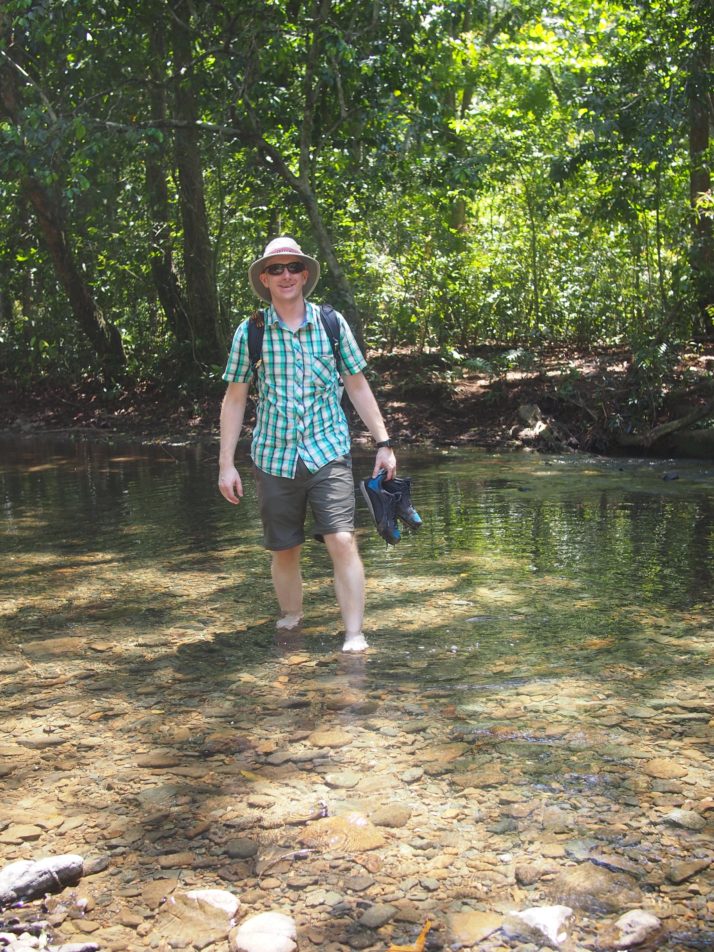 After lunch we had to cross the river 8 times to get back to where we’d left the jeeps. I was glad that I’d carried my flip-flops to cross the stony riverbed, Andrew had to do it barefoot.
After lunch we had to cross the river 8 times to get back to where we’d left the jeeps. I was glad that I’d carried my flip-flops to cross the stony riverbed, Andrew had to do it barefoot.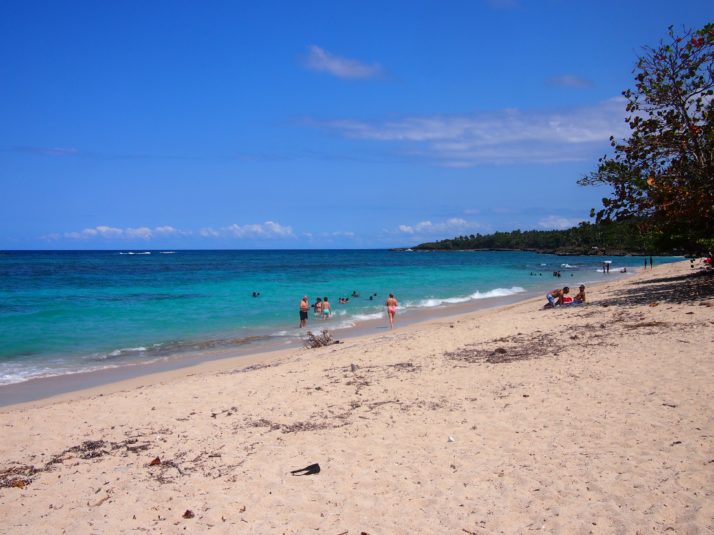 Playa Maguana, there’s even a guy who’ll bring you a drink direct to your beach towel
Playa Maguana, there’s even a guy who’ll bring you a drink direct to your beach towel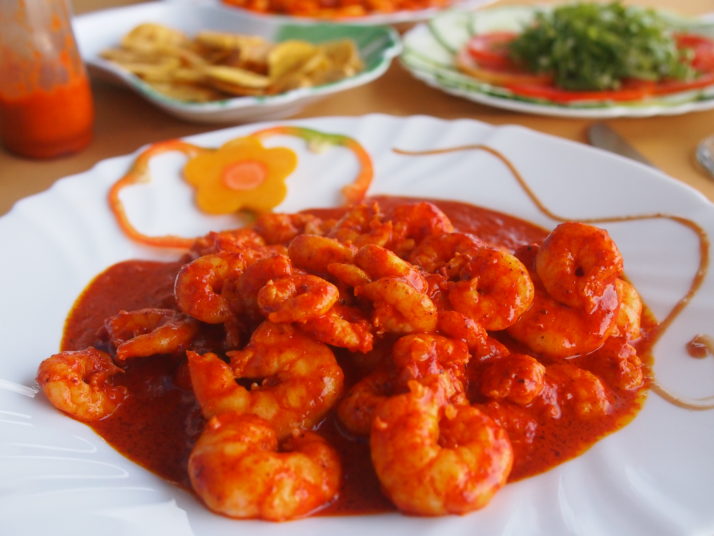 Prawns with the Baracoan sauce made from coconut milk, tomatoes, garlic and spices
Prawns with the Baracoan sauce made from coconut milk, tomatoes, garlic and spices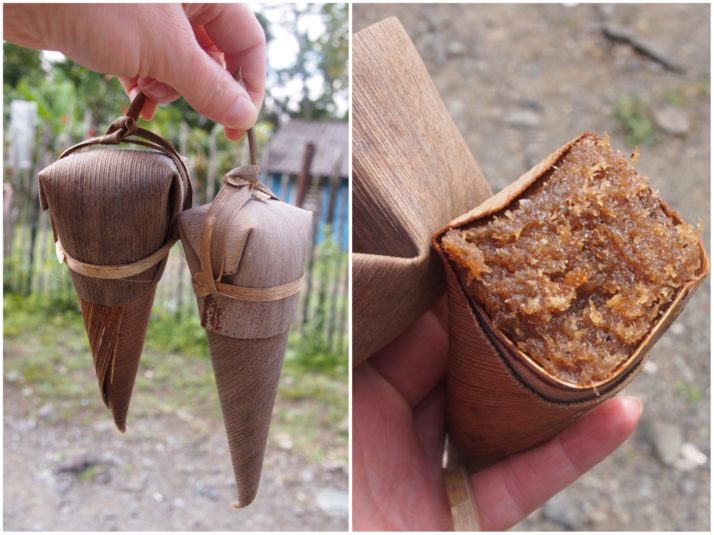 Peeling a cucurucho
Peeling a cucurucho